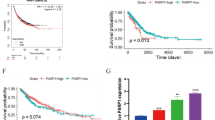Abstract
Bax inhibitor-1 (BI-1), a newly identified apoptosis inhibitor, has recently been found to be overexpressed in several human carcinomas and its specific down-regulation by RNA interference (RNAi) could lead to cell death. The purpose of this study is to investigate the role of BI-1 in apoptosis-resistance and the underlying mechanisms in human nasopharyngeal carcinoma (NPC) cells. Our results showed that BI-1 was expressed in two different human NPC cell lines, CNE-2Z and CNE-1, and specific inhibition of BI-1 expression by siRNA caused a significant increase in spontaneous apoptosis in both cell lines. Mechanistically, we demonstrated that down-regulation of BI-1 protein expression decreased the ratio of Bcl-XL/Bcl-2 with Bax protein as determined by Western blot and increased the activity of caspase-3 by colorimetric analysis, thus leading to the activation of the associated cell death pathways. Taken together, these results have provided evidence that BI-1 could serve as an important molecular target gene for the development of new therapeutic strategy against human NPCs.




Similar content being viewed by others
References
Jia WH, Huang QH, Liao J et al (2006) Trends in incidence and mortality of nasopharyngeal carcinoma over a 20–25 year period (1978/1983–2002) in Sihui and Cangwu counties in southern China. BMC Cancer 6:178
Chou J, Lin YC, Kim J et al (2008) Nasopharyngeal carcinoma—review of the molecular mechanisms of tumorigenesis. Head Neck 30(7):946–963
Makin G, Dive C (2001) Apoptosis and cancer chemotherapy. Trends Cell Biol 11(11):S22–26
Xu Q, Reed JC (1998) Bax inhibitor-1, a mammalian apoptosis suppressor identified by functional screening in yeast. Mol Cell 1(3):337–346
Grzmil M, Kaulfuss S, Thelen P et al (2006) Expression and functional analysis of Bax inhibitor-1 in human breast cancer cells. J Pathol 208(3):340–349
Grzmil M, Thelen P, Hemmerlein B et al (2003) Bax inhibitor-1 is overexpressed in prostate cancer and its specific down- regulation by RNA interference leads to cell death in human prostate carcinoma cells. Am J Pathol 163(2):543–552
Dykxhoorn DM, Novina CD, Sharp PA (2003) Killing the messenger: short RNAs that silence gene expression. Nat Rev Mol Cell Biol 4(6):457–467
Kim DH, Behlke MA, Rose SD et al (2005) Synthetic dsRNA Dicer substrate en hance RNAi potency and efficiency. Nat Biotechnol 23(2):222–226
Siolas D, Lerner C, Burchard J (2005) Synthetic shRNAs as potent RNAi triggers. Nat Biotechnol 23(2):227–231
Watanabe N, Lam E (2006) Arabidopsis Bax inhibitor-1 functions as an attenuator of biotic and abiotic types of cell death. Plant J 45(6):884–894
Kawai-Yamada M, Ohori Y, Uchimiya H (2004) Dissection of Arabidopsis Bax inhibitor-1 suppressing Bax-, hydrogen peroxide-, and salicylic acid-induced cell death. Plant Cell 16(1):21–32
Chae HJ, Ke N, Kim HR et al (2003) Evolutionarily conserved cytoprotection provided by Bax Inhibitor-1 homologs from animals, plants, and yeast. Gene 24(323):101–113
Andersen CL, Jensen JL, Ørntoft TF (2004) Normalization of real-time quantitative reverse transcription-PCR data: a model-based variance estimation approach to identify genes suited for normalization, applied to bladder and colon cancer data sets. Cancer Res 64(15):5245–5250
Tanaka R, Ishiyama T, Uchihara T et al (2006) Expression of the Bax inhibitor-1 gene in pulmonary adenocarcinoma. Cancer 106(3):648–653
Schmits R, Cochlovius B, Treitz G et al (2002) Analysis of the antibody repertoire of astrocytoma patients against antigens expressed by gliomas. Int J Cancer 98(1):73–77
Hückelhoven R (2004) BAX Inhibitor-1, an ancient cell death suppressor in animals and plants with prokaryotic relatives. Apoptosis 9(3):299–307
Lee GH, Kim HK, Chae SW et al (2007) Bax inhibitor-1 regulates endoplasmic reticulum stress-associated reactive oxygen species and heme oxygenase-1 expression. J Biol Chem 282(30):21618–21628
Chae HJ, Kim HR, Xu C et al (2004) BI-1 regulates an apoptosis pathway linked to endoplasmic reticulum stress. Mol Cell 15(3):355–366
Ihara-Ohori Y, Nagano M, Muto S et al (2007) Cell death suppressor Arabidopsis bax inhibitor-1 is associated with calmodulin binding and ion homeostasis. Plant Physiol 143(2):650–660
Demaurex N, Distelhorst C (2003) Cell biology. Apoptosis—the calcium connection. Science 300(5616):65–67
Xu C, Xu W, Palmer AE et al (2008) BI-1 regulates endoplasmic reticulum Ca2+ homeostasis downstream of Bcl-2 family proteins. J Biol Chem 283(17):11477–11484
Yang SP, Song ST, Song HF (2003) Advancements of antisense oligonucleotides in treatment of breast cancer. Acta Pharmacol Sin 24(4):289–295
He GR, Zhou KY, Cai KR et al (2003) Apoptotic effects of bcl-xL antisense oligodeoxynucleotides mediated by lipofectin on cell strain CNE-2Z. Chin J Cancer 22:11–15
Min L, Zhou KY, Liang T et al (2004) Inhibitory of bcl-xL antisense oligodeoxynucleotide on growth of human nasopharyngeal carcinoma in nude mice. Chin J Oncol 26:14–16
He GR, Zhou KY, Zhang YF et al (2003) Effect of lipofectin-mediated bcl-xL antisense oligodeoxynucleotide on CNE-2Z cells. J Guangdong Med Coll 21:14
Reed JC (1995) Bcl-2: prevention of apoptosis as a mechanism of drug resistance. Hematol Oncol Clin North Am 9(2):451–473
Liu F, He CW, Zhang YF et al (2005) RNA interference by expression of short hairpin RNAs suppresses bcl-xL gene expression in nasopharyngeal carcinoma cells. Acta Pharmacol Sin 26(2):228–234
Acknowledgment
This work was supported by the National Natural Science Foundation of China (No. 30672741).
Author information
Authors and Affiliations
Corresponding author
Rights and permissions
About this article
Cite this article
Zhang, M., Li, X., Zhang, Y. et al. Bax inhibitor-1 mediates apoptosis-resistance in human nasopharyngeal carcinoma cells. Mol Cell Biochem 333, 1–7 (2010). https://doi.org/10.1007/s11010-009-0198-y
Received:
Accepted:
Published:
Issue Date:
DOI: https://doi.org/10.1007/s11010-009-0198-y




